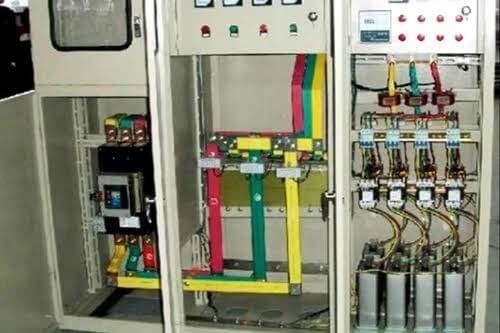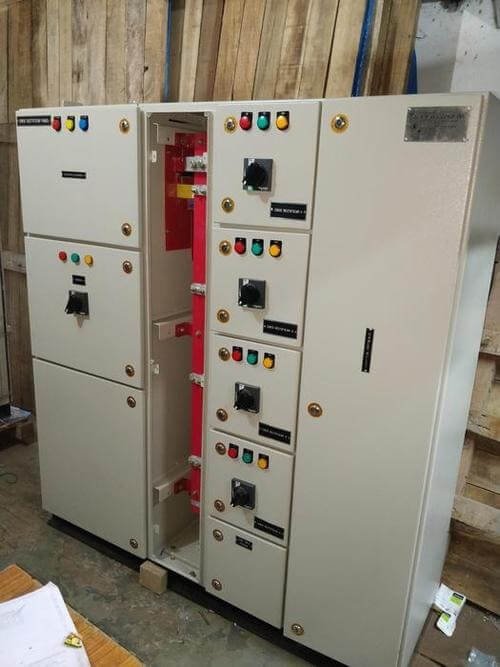The backbone of any good electrical system is the ability to safely and efficiently distribute power throughout a building. At the heart of this infrastructure is the power distribution panel board, a clever piece of kit that is the nerve centre of electrical distribution in commercial, industrial and institutional buildings across East Africa and beyond.
Modern electrical installations need more than just power distribution. They need intelligent, reliable and scalable solutions that can keep up with technological advancements while maintaining the highest safety standards. Understanding power distribution panel boards is key for engineers, facility managers and decision makers responsible for electrical infrastructure investments.

Power distribution technology has changed the way we design electrical systems. From simple mechanical switches to digital monitoring systems, today’s power distribution boards have advanced features that improve operational efficiency, reduce maintenance costs and give you unparalleled system visibility.
Understanding Power Distribution Panel Board Fundamentals
A power distribution panel board functions as the central hub that receives electrical power from the main supply and distributes it to various circuits throughout a building or facility. Such systems are commonly used at medium voltage (MV) or low voltage (LV) depending on the application requirement and load requirement.
Circuit breakers, protective relays, monitoring devices, and communication interface are the core elements of the modern power distribution boards. All of the components are essential to safe and reliable system-wide power delivery as well as real-time system status data to operators.
One of the most important attributes of panel board design is circuit protection. Sophisticated protective devices are able to sense fault conditions in the milliseconds range, isolating the area affected but keeping power on to other circuits. Such selective coordination avoids unwarranted outages and the minimum downtime of critical applications.
Intelligent features that are beyond simple protection are becoming the requirement of modern installations. The digital monitoring features can also offer rich details about power quality, energy consumption profiles, and equipment health. These characteristics allow predictive maintenance approaches that lead to a significant cost reduction in operations and system reliability.
Advanced Design Considerations for Modern Applications
Contemporary power distribution panel board design must address multiple complex requirements simultaneously. The role of thermal management has become very significant in the present-day electrical installations as they have been getting more and more power densities. The ventilation, dissipation of heat, and spacing of components allow optimizing the performance at different load levels.
Another major hurdle in contemporary electrical design is space optimization. Sophisticated protection and monitoring equipment and the need to be maintained and operated should be fitted into compact low voltage switchboards. The modular systems provide the ability to expand in future as well as reduce the required initial footprint.
Environmental concerns are much more influential in the use of panel boards. Coastal structures must be given extra protection against corrosion and facilities in dusty places must have proper IP ratings. High temperatures during hot conditions and low temperatures during cold conditions that are characteristic of some parts of East Africa require strong thermal design and selection of parts.
Safety features have changed a lot compared to conventional protection programmes. Mitigation technologies such as arc flash, improved integration of personal protective equipment, and remote operation minimize exposure of personnel to electrical hazard. Such characteristics are especially valuable in high-energy applications in which arc flash events may result in serious consequences.

Integration with Building Management Systems
Modern power distribution boards are essential interfaces between electrical infrastructure and building management systems. Integration capabilities facilitate the centralized monitoring and control of the electrical distribution and HVAC, lighting and security systems.
Communication protocols have been standardized to a small set of industrial Ethernet and fieldbus communications. Such systems facilitate a real-time data exchange, which allows complex energy management and demand response initiatives. Connection to cloud-based systems allows remote monitoring and sophisticated analytics.
Intelligent load management features can optimize energy efficiency. Automatic load shedding, peak demand control and power factor correction systems collaborate with each other and reduce the cost of energy usage and still allow the system to operate as per requirements. Such capabilities are especially useful in areas where there is time-of-use electrical pricing structure.
An efficient predictive maintenance capability is a remarkable step in the management of electrical systems. The constant observation of the major parameters allows noticing possible problems before they lead to the failures of equipment or unplanned outages. This method saves a lot when it comes to maintenance and enhances the reliability of the systems.
Selection Criteria for Industrial Applications
Choosing the appropriate power distribution panel board requires careful consideration of multiple technical and operational factors. Load analysis forms the foundation of proper system sizing, considering both current requirements and future expansion possibilities.
Short-circuit analysis determines the interrupting capacity requirements for protective devices. Proper coordination studies ensure selective operation under fault conditions, minimizing the scope of outages during abnormal system conditions. These studies become particularly important in complex industrial facilities with multiple power sources.
Reliability requirements vary significantly between applications. Critical facilities may require redundant configurations with automatic transfer capabilities, while standard commercial installations might rely on single-feed arrangements with appropriate backup provisions.
Maintenance accessibility influences long-term operational costs significantly. Panel board layouts should accommodate routine maintenance activities while minimizing system downtime. Front-access designs and modular construction facilitate maintenance in space-constrained installations.
Technology Integration and Future-Proofing
The integration of digital technologies transforms traditional power distribution boards into intelligent system components. IoT connectivity enables remote monitoring, diagnostic capabilities, and integration with enterprise management systems.
Cybersecurity considerations have become critical as electrical systems gain network connectivity. Proper security protocols, access controls, and network segregation protect critical infrastructure from cyber threats while enabling desired connectivity features.
Scalability features ensure that initial investments remain viable as facility requirements evolve. Modular designs, spare capacity provisions, and standardized communication interfaces facilitate future upgrades without requiring complete system replacement.
Compatibility with renewable energy sources becomes increasingly important as organizations pursue sustainability goals. Modern power distribution panel boards must accommodate bidirectional power flows, variable generation sources, and energy storage systems.
Quality Standards and Compliance Requirements
International standards govern the design, manufacturing, and testing of power distribution boards. IEC 61439 series standards provide comprehensive requirements for low-voltage switchgear and controlgear assemblies, ensuring consistent quality and performance across manufacturers.
Type testing validates design concepts under standardized conditions, while routine testing ensures individual panels meet specified requirements. Proper documentation and certification provide assurance of compliance with applicable standards and regulations.
Quality management systems ensure consistent manufacturing processes and continuous improvement. Leading manufacturers like Schneider Electric and Siemens maintain comprehensive quality programs that exceed basic compliance requirements.
Local regulations and utility requirements may impose additional specifications beyond international standards. Understanding these requirements early in the design process prevents costly modifications during construction or commissioning phases.
Maintenance and Operational Excellence

Preventive maintenance programs maximize the operational life and reliability of power distribution panel boards. Periodic inspection, cleaning and testing of components detect problems even before they can impact on the performance of the system.
Thermographic surveys identify emerging hot spots which may be a sign of loose connections, or overloaded parts. Constant monitoring of power quality determines the existence of harmonic distortion, voltage imbalances among other factors which might result in malfunctioning of sensitive equipment.
Training programs also make sure that the operations and maintenance personnel are knowledgeable on the correct procedures that have to be followed in operating equipment safely. This fact is especially significant to use with exterior electrical panels or installations in a problematic location.
Documentation systems are useful in facilitating efficient maintenance programs as they record the history of components, test data and the performance trend. Digital maintenance management allows predictive maintenance, and optimal resource allocation.
The electrical landscape is changing fast, driven by technology and operational needs. Modern power distribution panel boards are engineering solutions to complex distribution problems and a platform for future innovation.
Understanding what these systems can do and can’t do will inform your electrical infrastructure investment decisions. Proper selection, installation and maintenance will ensure the equipment runs throughout its life.
For East Africa organisations looking for cutting edge power distribution panel board solutions, IET has over 75 years of electrical engineering expertise on every project. Our knowledge of the region and partnerships with leading manufacturers means we can deliver the best solution for your critical electrical infrastructure. Get in touch with our engineering team today to see how our power distribution solutions can improve your facility’s electrical reliability and operational efficiency.

Leave a Reply